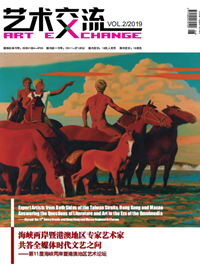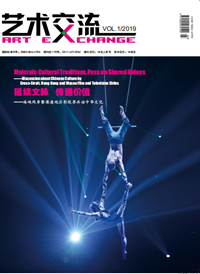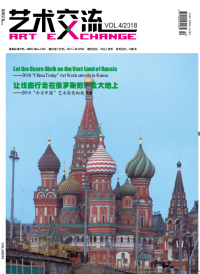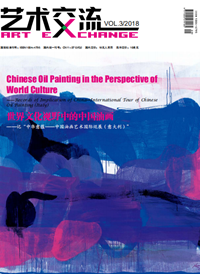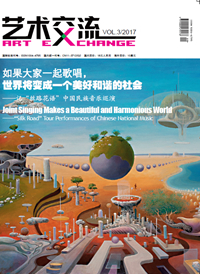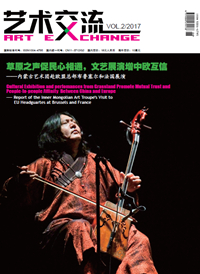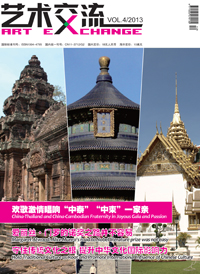
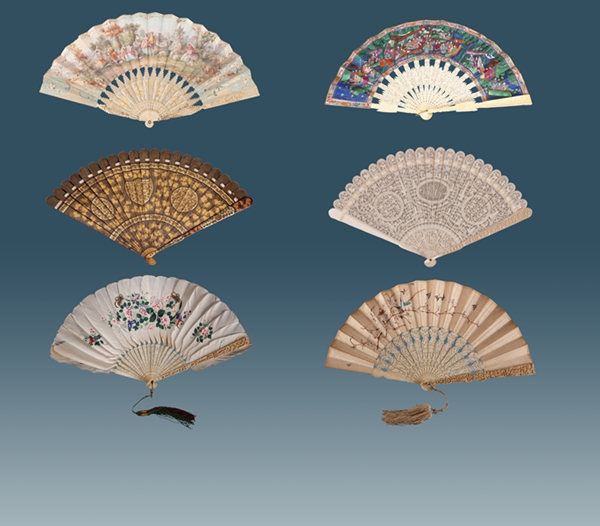
Since the Middle Ages, fans have been regarded as essential costumes by women in Europe. Because of the high price, European court ladies often use a luxurious and elegant fan to show off amongst peers. The export fan is an export-oriented handicraft that emerged in the context of the China-West maritime trade in the Qing Dynasty. In the 16th century, the opening of the east-west route gave birth to large-scale maritime trade. Tea, silk and porcelain continued to flow from ancient China to the Western countries, with mysterious Eastern culture drifting across the ocean as well. The Chinese taste and style aroused widespread curiosity and yearning in the Western market. The Chinese artisans, especially those from Guangzhou, combined the" Style of Guangzhou" craft with Western aesthetics to create a large number of fans exclusively for export mixing the Chinese and Western styles. These exquisite and gorgeous export fans were relatively inexpensive, which greatly satisfied the eager desire and demand from the western market. Therefore, "Made in Canton" has became a world-famous brand, and "Chinese taste" became the synonym of the latest fashion at that time.
On December 18th, 2018, the exhibition "Elegant & Vogue ---Chinese Export Fans in the 18th-20th Centuries" has been held at the Guangdong Provincial Museum. The exhibition features 163 pieces (sets) of exquisite exhibits of export fans, which are categorized into four parts, spanning the time length of more than two centuries. These export fans feature precious materials, craftsmanship, beautiful lining, condensing the exquisite craftsmanship of the artisans of the East and the West, and reflecting the aesthetic interest of the Western market at the time. While allowing the audiences to appreciate the elegance of China's export fans, the exhibition also initiated a historical scroll of trade and culture between the East and the West in the 18th and 20th centuries, where the audiences can admire the prosperity of the "Silk Road" on the sea.
The exhibition shows the development history of the world and the Chinese fans in a timeline. The first part is themed "East Encounters West". Under the background of the sea trade between the two parts, Western businessmen came to the Sup-Sam-Hung district in Guangzhou, discovering a wide range of export fans at the renowned commercial street, like Wenjie Street and Jingyuan Street. In this part, fan-selling paintings are employed as means to create an atmosphere of export fans at that time. Through the integrated demonstration of fans and fan boxes with branded trademarks, the audiences can intuitively experience the unique charm of these popular fans. The second part, "Stunning the West", it depicts the profound influence of Chinese export fans on Western society and female. The use of fans has been popularized from the royal family to the middle class, and the export fan has become the necessary accessory for the European and American ladies, the must-have has become an important endorsement of women's elegance and identity etiquette in fashion. This section selects the boutiques in the export fan with European-style dresses, export shawls and jewelry. It displays the export fan, a must-have item for western women's costumes in the form of scene combination. The third part with the theme of "Story of Fragrant Fan" is the exhibition with the largest number of exhibits. The interpretation of the export fan picture is taken as the entry point, and the shape, material, craftsmanship and style elements of different periods are displayed through a comprehensive and meticulous manner.The fourth part, "Fine Art of Fan", tells the audience about the characteristics of Chinese and Western fan crafts in the 18th and 20th centuries.
What will you draw on the export fan? Landscape & flowers, grape vines, flower & butterflies, Chinese opera figures, European pastoral parties... all appear on the fan. For materials, ivory and enamel are among the best. In addition to a variety of patterns, sophisticated materials, exquisite workmanship of the export fan also earn commendation from the audiences. The large carved-bones with chrysanthemum leaves, the hairthin small bones as the ground material, the top decorated with flowers and beasts, and the middle leaves decorated with three sets of vines, the central part of the oval is engraved with a customized family initials in brush letters. The outer area is decorated with pagodas and trees in the forest on one-sided carvings. This bone fan is made up of fan bones decorated with ribbons. After the unfolding of the fan bones, the ivory carvings of flowers, mountains and rivers are also called "Brisé" fans, the earliest shape of export fan of China. This kind of fan was first seen in the Kangxi period at the end of the 17th century in China, featuring the European style of custom-made processing, and it is also the longest-selling fan-shaped type.
At the time of Emperors Qianlong and Jianqing, there was a fan composed of fan bones, spliced ribbons and the shape of round fan after unfolding. The West called it "cockade fan", a derivative of the bone fan (Brisé Fan). Its form is also an exotic product. The "cockade" refers to a center badge decorated on a brim, usually in a concentric shape. The time of appearance of "cockade fan" in China was very short, mainly from the late 18th to early 19th century. Due to the complexity of the process and the high price, it gradually withdrew from manufacturing. The fan with ivory carving and decoration of pavilion and flower garden is one of the representatives of the "cockade fan", with the sixty-two-piece of ivory structure featuring serrated sharp-leaf fan head, the two large bones with embossed rhombic flowers, the malus-shaped landscape scenery. The extremely thin fan- cover adopts a single-sided enamel-brushed thin-embossed technique, showcasing ninefold decoration from the concentric circle; the top is decorated with a branch of flowers, the middle part is centered on an oval, and the two ends are symmetrically carved with twelve sectors, interiorized by landscapes, pavilions and floral patterns complemented by tangled flowers and birds. Each layer of the ornament is separated by a beaded strip, and the fan back is quite plain. Although the texture is rich, the layout is rigorous and complicated. The whole body is brushed with fine lines as thin as hair; the needle-sized beads are dense across the entire covering. Its exquisite texture, sharp and smooth technique, delicate and neat patterns, and skillful craftsmanship are amazing.
At the beginning of the 17th century, the Portuguese visiting China for business began to call the Chinese officials "Mandarin", which were later used by Western merchants. In the 17th and 18th centuries, many painters came to China with the missions to record what they saw and heard on route, including the life and work of Chinese officials. These paintings and other travel notes further triggered the curiosity of Western society for the life of Chinese people. The Chinese business people seized the speical psychology of Westerners, and the export of "Mandarin" patterns came into being. The fan with sandalwood bones, veneers and the Lingnan scenery belongs to such abovementioned category. This fan uses 16-story sandalwood as the fan bone, paper fan-cover, doublesided paintings, the one side is about official residence scene, and the other side features three malus shapes, centered in the paintings with Lingnan landscape and western characters, the courtyard and characters are painted symmetrically, surrounded by grapes, crassulaceae, red bats, gourds and other flowers. The "Mandarin" fan had been popular since the first half of the 19th century, developing to the peak stage in the mid to late 19th century and gradually declined after the 20th century.
In order to further meet the needs of Westerners, in addition to the pattern full of abundant "Chinese style", there were also a few export fans with Western characters and scenes as the main theme – the ivory fan painted European pastoral party, the one side of the paper cover concerns the European pastoral scenery and aristocratic men and women, the other side is painted golden European flowers; the fan of hawksbill bone with figures, flower and birds, each side is a double-sided painted fan covering, one side is painted with official residence scene, blue background with flowers and birds, the other side is about a fivecloud head, the Lingnan scenery and Western characters are centered, with the bottom concerning painted courtyard figures; the fan of mixed bones with gathering of fairies, the paper fan is painted on both sides, one side painted with the group of fairies scenery for longevity, the other side by the Lingnan scenery and Western characters, the outer area painted with story of Chinese courtyard characters; the fan of ivory bone with figures of SupSam-Hung Area is painted double-sided, as one side painted with garden party scene by officials with fancy costumes, the other side painted with scenery of the area. the Sup-Sam-Hung Area was the official residence for the Western merchants in the Qing Dynasty. The geographical area was bounded by the 13th Street in the north, the Pearl River in the south, the Xi Hao in the east and Lianxing Street in the west. According to the historical records, there were more than 5,000 shops specializing in art export, and about 250,000 employees engaged in manufacturing and selling the decorative art amazed by the whole world.



